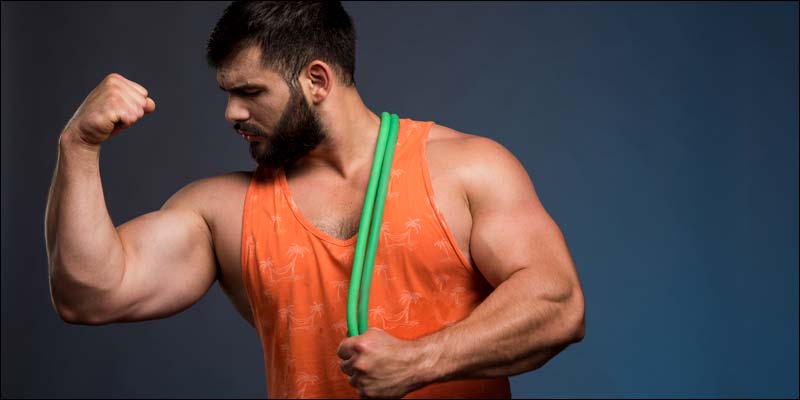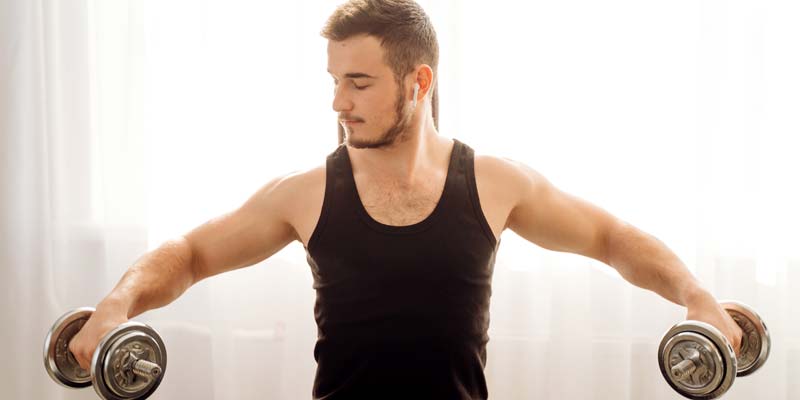If you’re on a journey to strengthen your lower body and enhance your overall fitness, you’ve likely come across a multitude of exercises promising results. Among these, the dumbbell Romanian deadlift stands out as a powerhouse movement capable of sculpting your hamstrings, glutes, and lower back while improving your posture and stability. In this comprehensive guide, we’ll delve into the intricacies of the dumbbell Romanian deadlift, exploring its proper form, benefits, variations, and how to incorporate it effectively into your workout routine.
About Dumbbell Romanian Deadlift
The dumbbell Romanian deadlift ranks among the top exercises you’ll find on the gym floor, and for good reason. With its multitude of benefits targeting the lower body, it’s easy to understand why it’s a favorite. However, mastering proper form is crucial for maximizing its effectiveness.
The dumbbell Romanian deadlift, often abbreviated as RDL, is a variation of the conventional deadlift. Unlike its counterpart, the RDL primarily targets the posterior chain, comprising the hamstrings, glutes, and lower back muscles. What sets the Romanian deadlift apart is its emphasis on hip hinging rather than knee bending, making it a quintessential movement for developing strength and stability in the hips and lower back.
What muscles does a Romanian Deadlift work?
Romanian deadlifts engage the entire posterior chain, which comprises the muscles along the back of your body. These include the
- Lower back
- Glutes
- hamstrings
- and core
Proper Form: Mastering the Technique
To perform the dumbbell Romanian deadlift correctly, follow these step-by-step instructions:
- Starting Position: Stand with your feet hip-width apart, holding a dumbbell in each hand with an overhand grip. Keep your spine neutral, shoulders pulled back, and core engaged.
- Hip Hinge: Initiate the movement by pushing your hips back while maintaining a slight bend in your knees. Keep your chest up and gaze forward to ensure proper alignment.
- Lowering Phase: Lower the dumbbells towards the ground while maintaining a straight back and slight bend in the knees. Aim to feel a stretch in your hamstrings without rounding your spine.
- Return to Standing: Engage your hamstrings and glutes to return to the starting position by driving your hips forward. Keep the movement controlled and avoid hyperextending your lower back at the top.
Benefits of the Dumbbell Romanian Deadlifts

Muscle Development
The RDL targets key muscles in the posterior chain, promoting strength and hypertrophy in the hamstrings, glutes, and lower back.
Improved Posture
By strengthening the muscles responsible for maintaining proper posture, such as the erector spine and gluteus maximus, the RDL helps prevent slouching and reduces the risk of lower back pain.
Functional Strength
The hip hinge movement pattern mimics daily activities like lifting objects from the ground, making the RDL a functional exercise with real-life applications.
Enhanced Athletic Performance
Stronger hamstrings and glutes translate to improved performance in various sports and physical activities, including running, jumping, and sprinting.
Variations to Spice Up Your Routine
While the traditional dumbbell Romanian deadlift is highly effective on its own, incorporating variations can add variety to your workout routine and target different muscle groups:
- Single-Leg Romanian Deadlift: Perform the RDL while balancing on one leg to enhance stability and unilateral strength.
- Sumo Romanian Deadlift: Adopt a wider stance with your toes pointed slightly outward to target the inner thighs and adductors.
- Deficit Romanian Deadlift: Stand on a raised platform or step to increase the range of motion and deepen the stretch in the hamstrings.
Incorporating Dumbbell Romanian Deadlifts Into Your Workout Routine
To reap the full benefits of dumbbell Romanian deadlifts, integrate them into your lower body or full-body workout routine. Aim to perform 3-4 sets of 8-12 repetitions with proper form, focusing on controlled movement and muscle engagement. As with any exercise, start with lighter weights to master the technique before progressing to heavier loads.
Conclusion
In conclusion, the dumbbell Romanian deadlift is a versatile and effective exercise for building strength, improving posture, and enhancing athletic performance. By mastering the proper form and incorporating variations into your routine, you can unlock the full potential of this compound movement. Whether you’re a beginner or a seasoned lifter, make room for the RDL in your workout regimen and experience the transformative benefits it has to offer.
FAQs
Q1. What are dumbbell Romanian deadlifts good for?
This exercise is particularly beneficial for those new to weightlifting, as it solidifies proper hip hinge movements. The dumbbell Romanian deadlift engages various muscle groups such as the hamstrings, glutes, back, and forearms, making it advantageous for seasoned lifters aiming to build strength and muscle mass.
Q2. What is the difference between dumbbell deadlift and RDL?
Both types of deadlifts activate the muscle groups mentioned earlier, but they do so differently. The traditional deadlift, with its deeper hip drop and greater knee bend, places more emphasis on the quadriceps. Conversely, the Romanian deadlift primarily targets the hamstrings and glutes due to its mechanics.
Q3. What muscles does the Romanian deadlift work?
The Romanian deadlift mainly targets the muscles along your posterior chain, such as the lower back, glutes, hamstrings, and calves. Additionally, it strengthens secondary muscle groups like the core, inner thigh muscles (adductors), trapezius muscles, and posterior deltoids.
Q4. Are dumbbell deadlifts safe?
Although dumbbell deadlifts carry a lower risk of injury compared to barbell deadlifts, it remains crucial to learn and maintain correct form.

